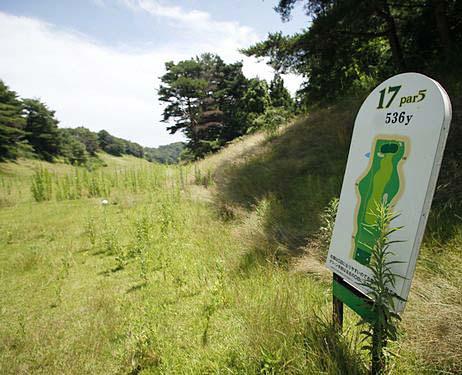 There was a time when it seemed like nothing could stop the golf course construction juggernaut. Now, it seems as though nothing can restart it. And there are those who say it doesn't deserve a boost until there is, if ever, a seismic shift in popularity of the game.
There was a time when it seemed like nothing could stop the golf course construction juggernaut. Now, it seems as though nothing can restart it. And there are those who say it doesn't deserve a boost until there is, if ever, a seismic shift in popularity of the game.According to the National Golf Foundation, only 14 new courses (in 18-hole equivalents) were built in 2014 in the United States and another 157.5 closed their doors, for a net loss of 143.5 courses. Declining interest of the current magnitude once was nearly inconceivable in a business marked for decades of slow, steady growth. However, last year marked the eighth straight year that more courses closed than opened, a trend that has become so common it now is known around the industry as "market correction."
But the need for a market correction goes much deeper than real estate golf gone wild. It is the result of a complex relationship of supply and demand and how the game is perceived across gender, age and racial lines at a time in which adults in their prime earning years are more willing to devote time on weekends to getting their children to travel league sporting events than their own R&R. And this correction is taking far too long to occur, said Jim Koppenhaver of Pellucid Corp., during the annual state of the industry address he conducts each year with Stuart Lindsay of Edgehill Golf Advisors during the PGA Merchandise Show in Orlando, Fla.
According to NGF statistics cited by Koppenhaver, a total of 3.7 million people took up golf in 2013, however, 4.1 million golfers left the game, for a net loss of 400,000 players. A net gain of almost 260,000 women golfers was offset and more by a net loss of nearly 650,000 men. The biggest losses were in the 18-34 age group, where nearly 200,000 people found something else to do with their spare time and their disposable income.
The PGA of America, through its Golf 2.0 player-development initiative, had projected a total of 28.7 million golfers in 2013. NGF estimated there would be 27.1 million players last year, and Koppenhaver's Pellucid Corp. put that number at 25.7 million. All were well off the mark with, according to Koppenhaver, the estimated number of U.S. golfers at 24.1 million. The game reached its zenith in 2000-01 when 29.8 people played 518 million rounds.
"Golfer attrition s the No. 1 problem we have in the market," Koppenhaver said.
Fewer golfers mean fewer rounds played, and rounds played also were down last year to 462 million, according to Golf Datatech. That is the fewest rounds played since 441 million in 1995, according to the report. Last year's number is well off the 10-year average of 492 million rounds played and way behind the record-setting years of 2000-01.
The golf industry began shedding its oversupply in 2006, marking the first time since 1946 that more courses closed than opened. Since this trend began eight years ago, there has been a cumulative net loss of 643 courses nationwide, according to NGF, going from an all-time high of 15,207.5 18-hole equivalents in 2005 to 14,564.5 in 2013. And even more must go, and quickly, Koppenhaver said.
"It's a lot harder to plow a golf course than it is to plant one," he said. "I hope people think about that before they put one in."
Of the 157.5 courses that closed last year, 151.5 were public-access facilities; just the kind that would appeal to those the game needs most, newcomers, casual golfers, women and juniors. A total of 144.5 of the public-access facilities were daily fee and seven were municipal operations.
Course inventory grew by 4,500 (more than 40 percent) in the 20 years from 1986 to 2005, according to NGF. Industry analysts project equilibrium to occur once the industry has shed about 1,500 courses from the 2005 inventory total. To reach that number in a timely manner, Koppenhaver said, courses should be disappearing at twice the current rate.
"It took us five years to get them in the ground. It's taken eight years and counting to get them out," Koppenhaver said. "Supply reduction was about 1 percent. And the thing I keep saying is we need to be losing 2 to 2.5 percent of our supply a year to get back to equilibrium some time in the next three to five years. So, at the current pace of 1 percent we still have probably another seven to 10 years before we get back to the equilibrium we enjoyed back in the mid-1990s when people were relatively happy and prosperous."
Koppenhaver pointed to rounds played at each facility to illustrate the need to reach equilibrium and the snail's pace at which the industry is approaching it.
An average of 31,720 rounds were played per 18-hole equivalent in 2013. That is 1,646 rounds per unit less than in a weather-aided 2012 and represents a steady downward trend that has been in place since Koppenhaver began following the business in 2000. The quicker equilibrium is reached, the better it will be for those facilities that will survive in the long run, he says.
"The average course was healthy at about 35,000 rounds per 18-hole equivalent," he said. "Other than 2012 when we got a nice bump from the weather, the trend here is not looking very favorable."

